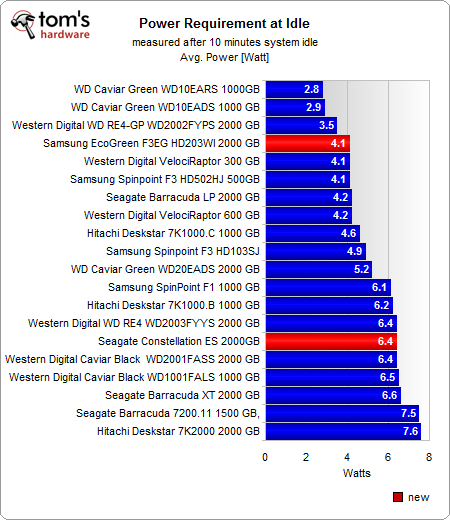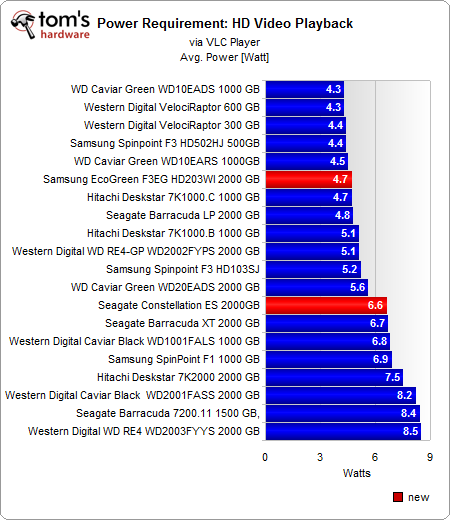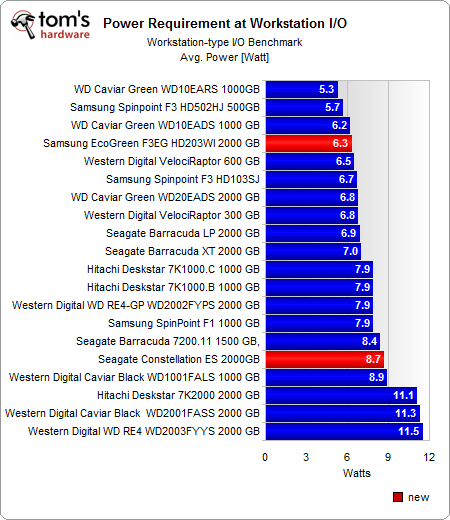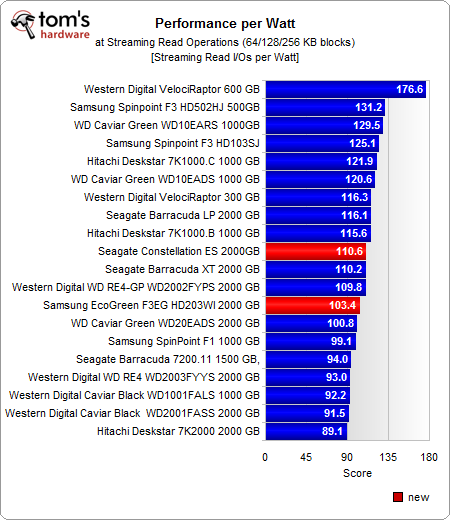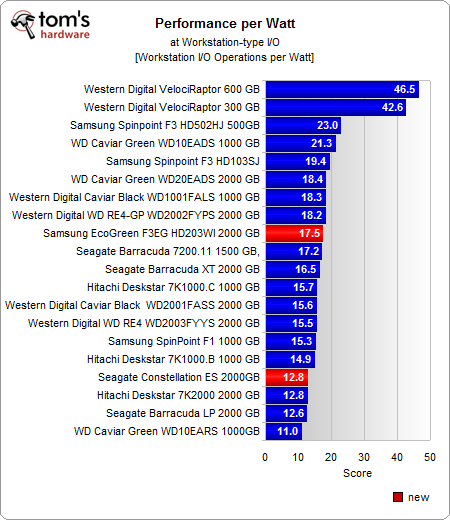Two 2TB Hard Drives For Storage Applications, Reviewed
Samsung and Seagate are each offering new high-capacity drives that strive to cram tons of data into a 3.5" form factor. Today's battle is the eco-friendly Spinpoint against the nearline Constellation, low power against business-class. Which one is best?
Benchmark Results: Power And Efficiency
Power Consumption
Idle power is probably the key characteristic for low-power drives like Samsung’s Spinpoint F3EG, but you have to take form factor, spindle speed, and the platter count into consideration at all times. WD’s 1TB Caviar Green does particularly well because it spins at a low 5,400 RPM and it only comes with two or three platters. In this context, Samsung’s 2TB EcoGreen shows excellent idle power consumption, requiring only 4.1W in active idle. WD’s 2TB Caviar Green is at 5.2W, and the Seagate Barracuda LP requires 4.2W. Clearly, Samsung did a great job.
Meanwhile, the Constellation ES is right where we would expect, given its higher spindle speed.
At maximum read throughput, the Samsung drive still shows excellent power consumption results on par with similar drives, and is beaten by drives that use fewer moving parts. Seagate’s Constellation ES power consumption readings are equally impressive given that it is in a different segment. Other performance drives from Hitachi or WD require more power at peak throughput.
Power consumption at a defined and limited data stream (in this case, 1080p video playback) is another important test that helps to find out which drive is lowest on power in a variety of application scenarios.
Samsung doesn’t deliver impressive I/O performance with its Spinpoint F3EG, but the power consumption stays low. The Seagate Constellation ES doesn’t seem very efficient at workstation I/O, as the power consumption is rather high at 8.7W. However, some 2TB high-performance competitors are worse.
Efficiency
Get Tom's Hardware's best news and in-depth reviews, straight to your inbox.
These are the performance per watt readings for streaming reads at peak throughput. The Seagate Constellation ES requires more power at maximum speed, but it also delivers much better performance. Therefore it's superior on throughput power efficiency.
When it comes to I/O efficiency, Samsung takes the lead over Seagate. Samsung is so much lower on power that the significantly lower I/O performance doesn’t matter much in the end. Still, there are better solutions for I/O-intensive workloads than these two hard drives, so please consider these results mainly for the sake of completeness, rather than as a deciding factor.
Current page: Benchmark Results: Power And Efficiency
Prev Page Benchmark Results: PCMark Application Performance Next Page Conclusion